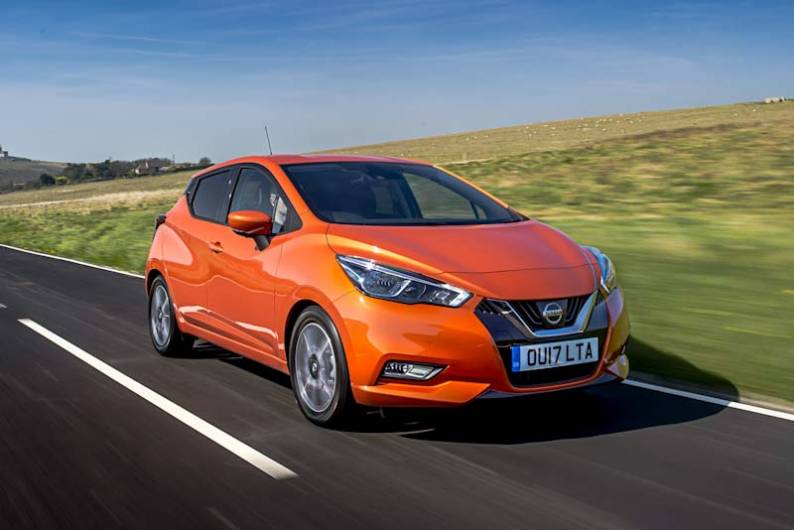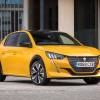
RAC sale – up to 33% off*
• Roadside cover from £5.29 a month†
• We get to most breakdowns in 60 mins or less
• Our patrols fix 4/5 breakdowns on the spot

By Jonathan Crouch
Introduction
In post-2016-era MK5 form, the Nissan Micra once again became a very class-competitive, characterful supermini. In this form ,it was stylish and very good to drive, while setting a high standard with its sense of safety. You know that car in this class from the 2016-2023 period you were thinking of? Stack it up against this one.
Models
5dr Hatch (petrol - 1.0, 0.9 IG-T, 1.0 IG-T / diesel - 1.5 dCi)
History
The MK5 Nissan Micra introduced in 2016 was a supermini with a lot to prove. Made by a brand with a lot of ground to make up in this segment. At this 'K14'-series model's launch, the company knew it had only itself to blame for this, in 2010 transferring Micra production from Sunderland in the UK to plants in India, Thailand, Mexico and Indonesia using low cost labour. Those factories were given a fourth generation'K13' model to assemble with a global remit theoretically designed to satisfy everyone, but its cheap, characterless demeanour achieved precisely the opposite result and sales sank to the bottom to the supermini segment. Belatedly, the Japanese maker then realised what most of us previously already knew; namely that the Micra was at its best when it was built and individualistically designed in Europe. The MK2 and MK3 models proved that. This MK5 version aimed to do so again.
There were certainly no half-measures with the K14 version, with a full-on European design mostly engineered in the UK and built in the same French Renault plant near Paris that made that brand's rival Clio model. The Micra shared an evolved version of that car's platform too, but just about everything else here was new. The avant garde looks ushered in a completely fresh driving experience, with drive dynamics borrowed from larger models in the Nissan line-up. Hi-tech safety and media technology was democratised for use here too, plus there was a far more pleasingly designed cabin that offered more space and could be embellished with some tempting customer options. Nissan gave the gave a light facial update in 2020, about the same time that the dCi diesel version was dropped. And the MK5 Micra sold until mid-2023, then wasn't replaced.
What You Get
If you're used to the conservative design of the old pre-2016-era fourth generation Micra, you may need to sit down and have a cup of hot sweet tea after looking at this one. Expressive and emotive, this is the kind of shape you might more readily associate with a motorshow concept car than a production model, with an athletic silhouette that's much longer, lower and wider than what was offered before. Inside up front, things were much enhanced over what went before, the fascia based around what Nissan called a 'gliding wing' dashboard layout which feels of decent quality and could from new be personalised with colour-coded versions of the centre panel.
Through the 'D'-shaped multi-function steering wheel, the instrument cluster is much as you'd find it on a more expensive Qashqai crossover model from this period. The 5-inch TFT screen can be set to show everything from navigation to performance data. Anything this monitor can't tell you will probably be covered off by the 7-inch centre-dash infotainment touchscreen you get providing you avoid entry-level trim. Probably, the extra technology helps influence the greater perception of quality and our favourite touch from new was the optional 'BOSE Personal Premium Audio System' which came with two speakers actually built into the driver's head rest.
In the rear seat, because of the swept-back styling, you shouldn't expect the kind of space that might be offered by a boxier-looking rival from this period like, say, a Skoda Fabia or Honda Jazz. Fortunately, as Nissan knows very well, most supermini buyers use these pews primarily for children - who'll be more than satisfied by what's on offer here. Shoulder width is also fine for two thanks to the extra 78-mm of width that this car enjoys compared to its predecessor.
As for the boot, well with the rear seats in place, this Nissan offers 300-litres of cargo accommodation, which is good but nowhere near class-leading. Still, the luggage area provided here is properly-shaped to accommodate something like a fold-up buggy or the weekly shop. Of course as usual, you can extend the space available by using the 60:40-split rear seatback.
What You Pay
Prices for this MK5 Micra start at about £7,500 (around £9,250 retail) for a '17-era 1.0 petrol model in base 'Visia' spec. We think you'd do better to choose the 0.9-litre IG-T petrol turbo engine, which values from a '16-plate (with 'Visa+' trim) from around £7,700 (around £9,500 retail), rising to around £11,300 (around £13,100 retail) for an equivalent 1.0 IG-T 'Visia'-spec late-'22-era car. You'll pay a little more of course if you want a diesel. A '16-plate 1.5 dCi Micra on a '16-plate values in 'Acenta' trim from around £8,800 (around £11,100 retail), rising to around £12,000 (around £14,500 retail) for one of the last late-'20-plate diesel models with the same trim. All quoted values are sourced through industry experts cap hpi. Click here for a free valuation.
What to Look For
While plenty of Micra owners in our survey were very happy with their cars, we also came across some who'd had problems. One experienced a juddering when driving over 65mph, which was followed by total power loss (with the accelerator to the floor) and a flickering from the control panel. We've heard of problems with very early versions of this MK5 Micra with insecure ignition switch wiring. This might cause the engine to shut down unexpectedly and not restart - and was fixed by a recall in 2017. A few early versions of this MK5 design had incorrect masses applied to their VIN labels - again something solved by a product recall. Another recall applied to problems with the passenger airbag on models produced in 2019, the airbag in question slightly prone to develop a tear when deployed. Again make sure the appropriate recall work has been applied.
If you're one of the rare customers looking at the 1.5-litre diesel version of this car, give the model you're looking at a good highway test drive because it's diesel particulate filter may have got blocked up with trapped soot if the car has been used mainly for urban use. Other issues with the diesel particulate filter happen if it's been shut off part-way through the regeneration process. This leads to contamination of the oil system with fuel, which will in turn lead to the oil level rising gradually over an extended period, which can cause damage to the engine. If you're looking at a Micra diesel, with this in mind, check the oil level or have the car inspected. Otherwise, the two petrol engines seem pretty reliable. And it's just the usual things - check the any alloy wheels fitted for scratches and check the interior for child damage. And of course insist on a fully stamped up service history.
Replacement Parts
(approx based on a 2017 Micra 0.9 IG-T 90 ex VAT) An air filter will be priced in the £9 bracket, an oil filter will sit in the £6-£22 bracket, a pollen filter will be around £9-£34 and a radiator will be around £56-£192. Front brake pads are in the £34 to £42 bracket for a pair. Front brake discs cost in the £45-£77 bracket. Wiper blades cost in the £2 to £28 bracket each. A starter motor will cost around £200. A replacement tail lamp is in the £93-£99 bracket.
On the Road
One of the reasons that Nissan was so freed up to develop other aspects of this MK5 Micra was that it didn't have to worry much about the oily bits. As with the basic platform of this car, these came directly from Renault's fourth generation Clio, with buyers primarily selecting between the pair of three cylinder petrol engines on offer. There was a 71PS 1.0-litre normally aspirated unit, but we'd urge you to try and stretch to the preferable 0.9-litre 'IG-T 90' turbo powerplant, a variant that mixes peppier performance with more acceptable economy; the original NEDC figures were 64.2mpg on the combined cycle and 99g/km of CO2. If you need to do better, Nissan originally offered a 1.5-litre dCi diesel version that also put out 90PS but which will only really make sense if you cover a higher annual mileage than is typical in this class of car.
What certainly isn't typical in this segment (from the 2016-2020 period anyway) is the level of electronic sophistication that this Micra delivered as standard. All models got Nissan's 'Chassis Control' package incorporating 'Active Trace Control' (which helps corner turn-in) and 'Active Ride Control' (which calms the body pitching you'd normally get over sharper bumps). Both systems use automatic and very subtle brake application and give a more fluid, flowing feel to the way this Micra progresses down the road. The rather firm suspension can't quite complement this and we'd like a little more feel at speed from the steering but otherwise, we came away impressed with the drive dynamics on offer here. In the class from this period, only Ford's Fiesta is more fun to punt along. In short, it was all a huge step forward from anything the Micra model line had served up before.
Overall
This fifth generation 'K14'-generation Micra was a huge improvement. It had to be. The previous 'K13' model was, if anything, a backward step from its predecessor. Perhaps though, we weren't prepared for just how serious Nissan was going to get in its pursuit of supermini segment success. The sleek styling might have dated, but it's certainly enough to make a Fiesta or a Corsa from this century's second decade look very dull indeed. The downside to that lies in the necessary compromises entailed in terms of rear seat headroom, but that'll only ever be a problem if you regularly carry adults in the back, something most supermini buyers hardly ever do.
What that all leaves us with is a car that ought to appeal way beyond the core used market the Micra has always previously targeted - cash-strapped parents, driving instructors and motorists of a certain age. In our view, it's everything a thoroughly modern supermini should be - stylish, sophisticated and cheap to run. In short, we urge you to approach this car with a fresh perspective. After, Nissan certainly did.







